The Central Trend has been giving students an outlet to express themselves and create new bonds for the past 25 years
The first ever issue of The Forest Edge, distributed on Dec 17, 1997
1997 – The Forest Edge
25 years ago, on Dec. 17, 1997, the first issue of The Forest Edge was distributed to all students during a communication break.
After a semester of hard work and dedication, the first Editor in Chief Jennifer James, previously known as Jennifer Boettcher, had not only accomplished her dream of being on the school newspaper, but being the reason for the class as a whole.
“I transferred to Forest Hills Central from a [school in] Colorado in 1995,” James said, “and my whole thing as a freshman was that I wanted to be on the paper, but in the middle of the year, we moved to Michigan and I was like, ‘This school doesn’t even have a newspaper.’ So, as a freshman, I had to get acclimated to Forest Hills Central, [but] it was very cliquey. At the end of sophomore year, I was like, ‘This is ridiculous. I want to write [for] a paper and be involved in something that brings people together.’”
This idea was the first spark of what would someday create a legacy at FHC. James’ determination to be a part of something special did not stop at a thought; she decided to pave the path for FHC to have a newspaper, no matter what it took.
Her perseverance lead to the beginning of a class that changed the course of high school for many other students then and now.
“Our principal at the time was Ron Caniff,” James said, “and I set up a meeting to talk to him about [how] this is something our school needs, [and] there is too much going on in the world to not have something like this [as an] outlet for students, plus just [having] the knowledge and setting people up to see if this was the path they wanted to take. I met with [Caniff], and earlier that week, Mr. George had gone to him as well and said ‘Hey, I want to start a paper,’ so in the same week I went to him, Mr. George went to him.”
English teacher Ken George also realized that the school didn’t have a newspaper, or any type of outlet, for students to express themselves at the same time. As journalism played a large part in his life, he decided this was an important factor in many students’ high school experience.
Similar to James, George’s passion for journalism drove him to the conclusion that FHC needed a newspaper.
“After a couple of years of teaching [at FHC],” George said, “I realized—I think because of my experience as a high school journalist on my high school paper and as a writer on my college newspaper—that it was very odd that we did not have a school paper. So, I did some research and found out that we did have one in the past, quite a ways back, and then it had just ended; so I went to the principal and said, ‘I would like to start [a newspaper],’ and he said, ‘Great, let’s do this, but go do some research and look at other schools and find out what they do,’ so I did that.”
Though James and George both advocated for the class, it was still debatable whether it should be a just club or an actual elective, as they were already partway through the semester, and the schedule changes would become too difficult.
Nonetheless, they pushed through. With a lot of convincing and proving that they were dedicated to the idea, the project that was The Forest Edge began.
“He [offered to] make it a club,” James said, “[but I thought] that wasn’t enough. It needed to be a class, but schedules had already come out for the next year. So we went and toured—[alumni] Nate [Beal] and Andrea [Lilly] came with us—and we went to East Grand Rapids. We looked at how their programs worked, we put together this huge proposal [and] fought for it to become a class, and they added it after electives and all that stuff had been [selected] as classes, and then our whole goal was that we [had] to find people to [join] the paper.”
Soon after this expedition concluded, the process of putting together the paper officially started. Once gathering a group of 22 students together, they could finally bring this dream to life.
Former staff member Nate Beal looks back on the class fondly, but also remembers the struggles of figuring out the programming as they went along. Not only did he have to deal with the complexity of the programming, but he was also assigned the task of picking up the papers when they were finally printed.
“My senior year,” Beal said, “I would get up at like three in the morning and there was a print shop way down in Jenison in a warehouse. They would have all our papers done, and I would have to pick them up at 4:30 in the morning, it was the first time in my life I had ever started drinking coffee. They would just leave [the papers] on the loading dock, nobody was there, [and] there were winter days where it was pitch black and snowing and I was hauling these bales of newspapers into my giant old car that I had.”
While there were many hardships in the beginning while putting it all together, they were a lively group that had a passion for writing. The Forest Edge staff consisted of a multitude of students from many different cliques within FHC, and they were all brought together due to their love for journalism.
“I’d say diving in [and] starting the whole thing [was impactful],” James said. “Going to different schools to learn how they ran their papers, learning the writing style, the time management, [and] working together. We had so many different personalities in that room all with the same goal. It truly taught me more about teamwork than any sport I played.”
We had so many different personalities in that room all with the same goal. It truly taught me more about teamwork than any sport I played.
— Jennifer James
The variety of people allowed for multiple perspectives to be shown throughout the paper. The staff was a team and they all worked hard to make The Forest Edge enjoyable, not only for readers but for themselves too.
Former staff member Lauren Van Tongeren, much like James and Beal, remembers her experience very fondly.
“I remember being very proud to be part of the newspaper staff.” Van Tongeren said. “It makes me so happy to know the newspaper is still going strong 25 years later; it was a class I always looked forward to. We were an eclectic crew that had lots of fun together. I remember laughing a lot.”
2014-2016 – The beginning of The Central Trend
With the world becoming invested in social media and the internet, it was time for The Forest Edge to make a change and move to an online news outlet, and The Central Trend was born.
Former Editor in Chief Ally Stapleton was on staff to experience the evolution from newspaper to magazine, and eventually, to a website. Her three years on staff were all different due to these changes, but she embraced it nonetheless. Despite the changes, Stapleton was still able to find a sense of peace within the class.
“It was a pretty relaxed environment, [and a] pretty warm environment, which I always enjoyed,” Stapleton said. “It was a fun class for a lot of people that were in it, it was my last class of the day, too, [so] it was always a nice way to finish and unwind and do things that we were interested in and have a little more choice over what you’re writing than you do in some of your other classes.”
Much like James, Stapleton also admired the many different personalities that were showcased throughout The Central Trend staff. It was a class that brought people together beyond just the classroom setting.
The stories they got to share were all unique due to the varying perspectives shown on the site and still are shown now.
“I did sports and stuff in high school, I ran cross country and track,” Stapleton said, “and I always loved the team environment, and [The Central Trend] felt like a team, so it was nice to be a part of a non-athletic team and getting that in a different context, like working together with people to create something you are proud of and that uses everyone’s unique strengths. I gravitate towards those environments now too; opportunities where I can collaborate with people and work on things together, so that was a cool kind of step into [it] when I was in high school.”
For many students, the environment is what makes or breaks the class, and with the welcoming environment room 139 brings, it tends to be the class the staff looks forward to most.
Not only did Stapleton love the students on staff, but she also adored learning more about her peers through the interview stories she would write, which is just another element that makes the class so special.
“I think that writing for TCT helped me notice better and be more interested in people; I just got to see how interesting people are,” Stapleton said, “like random people at school that [I] would pass by in the hallway. People are fascinating; they have so much going on in their lives and things they’re passionate about, and it made me more aware of that, which I love. It’s something I have carried with me.”
Present day – The Central Trend
After 25 years of The Central Trend being an outlet for many students, the site is still impacting the lives of the people at FHC to this day.
Current Editors in Chief, senior Allie Beaumont, and junior Sofia Hargis-Acevedo, have both been a part of the staff since their freshman year, and have found themselves through the class, similar to a lot of the past staff members.
“Throughout the years I’ve really found where I belong in the classroom,” Allie said. “I think no matter what you’re going to be welcomed, but there are so many different aspects of the class that it takes some time to adjust and learn how everything works and where you fit within the space. After all these years, I finally feel like I know exactly what I’m supposed to do, and so much so [that] I can help other people find their place within the classroom. So I think I kind of started out timid and not exactly sure what my path was going to be, but I quickly found it, and I’ve been on that path ever since, and I am happy to have ended up here.”
The comfortable environment provided within the class allows the staff to look forward to their sixth hour every day while also growing as a writer.
Like Allie, Sofia has also been able to find herself through writing stories and the friendliness of the staff in general. Though people come and go over the years, the environment rarely changes and the room stays filled with joy.
“I definitely really grew into myself these past few years,” Sofia said, “there is definitely a homey feel within the room that I have really adapted into. I’ve become more of who I am today because of my time in room 139, and I don’t know who I would be without it. Genuinely thinking [about it], I would [still be] really shy and I definitely wouldn’t have found myself if I wasn’t in that room.”
The positive vibe that radiates from the staff allows them to indulge in their passions while also being surrounded by an encouraging group of people, and it has always been that way.
Though the work may be stressful at times, the serene yet chatty atmosphere provides relief and reduces the stress of the workload.
“Something about the class, especially it being sixth hour, kind of sets it up to not feel like a class,” Allie said, “because I go through my whole school day and it’s work and it’s homework and I’m stressed and then I get here and sometimes the work we have to do here is stressful, but it’s not always a stress I feel in the moment, because in the moment, I’m just in the classroom with my friends and I’m doing what I love. Sure, the assignments come later on, but it feels not like a class, because you run what you do in the class and I think that’s what makes it such a special extracurricular.”
Allie, Sofia, and the rest of the staff make the class a positive and comfortable place for everyone to leave their other stresses at the door and just be in the moment. This effort is passed down to staff from generation to generation and will continue to go on for the rest of TCT’s days.
Sofia also sees the class as an escape from the rest of the school’s stresses and continues to be the version of herself found in that room each and every day.
“It’s such a homey type of feel in the class that is so different from any other class I have,” Sofia said, “it’s a family in there and I’m able to really let loose and just be myself in that class and not worry about anybody else except for myself. I can just be in the class, be with the people I enjoy being with, I can get my work done, and socialize. It’s a really relaxing class, especially compared to everything else we take, [so] I’m glad I decided to stay in TCT.”
The Central Trend’s legacy lives on, not only in writing, but through the people behind the screens and within the walls of room 139.
“For a lot of [The Central Trend staff], it’s kind of a home-base for them,” George said, “I think a lot of them end up with people that have similar interests and maybe can’t find other clubs or groups that are really their thing. Over the last twenty years, I have seen a lot of those kids find out that this is the thing that makes them very happy. It is the least school-like class in school, because students are managing other students, [and] it’s very much self-guided and self-motivated, and I think that’s really unique. Most classes, you walk in, you sit, you listen to the [teacher] talk, and that’s what you’re supposed to do, this is very different [from that].”

Payton is a senior returning for her second year on The Central Trend. When she is not writing stories, you can find her at a coffee shop with a book...





















































































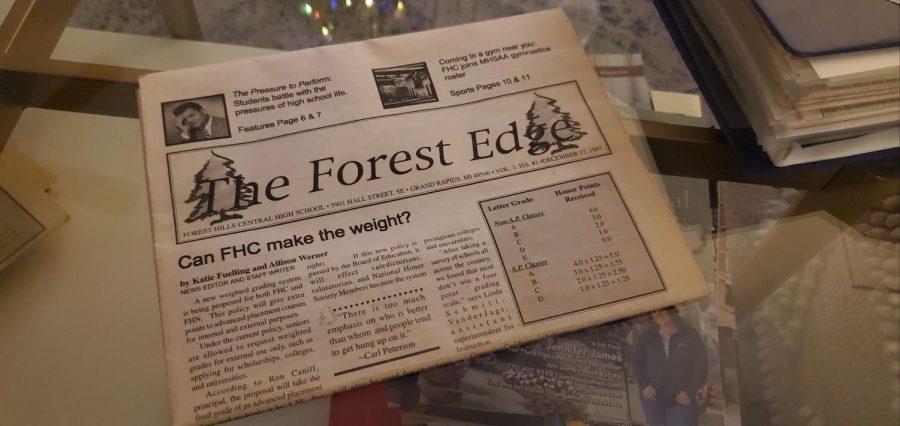

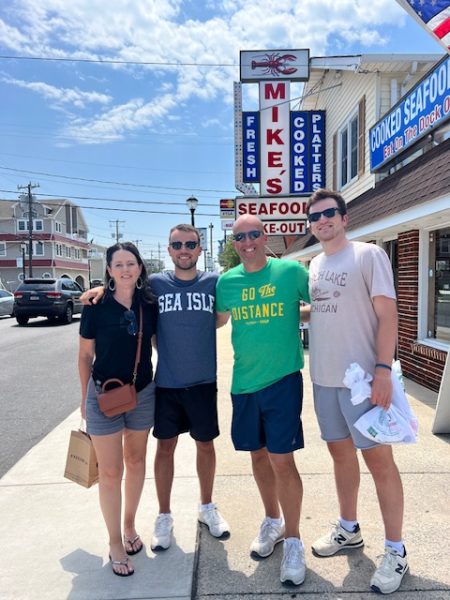



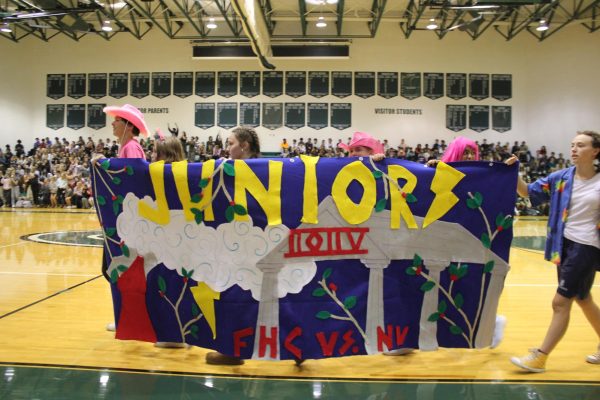
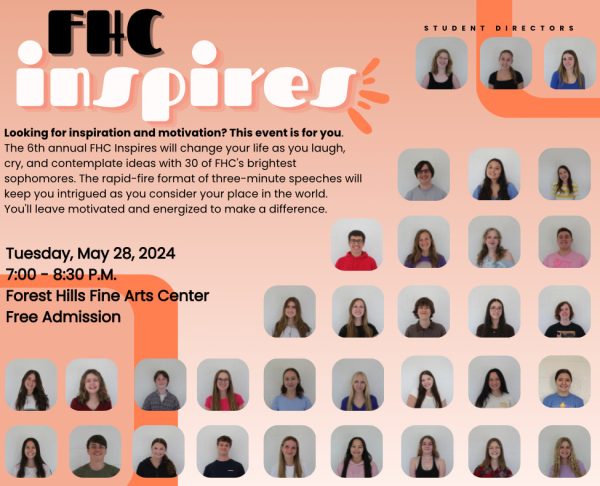
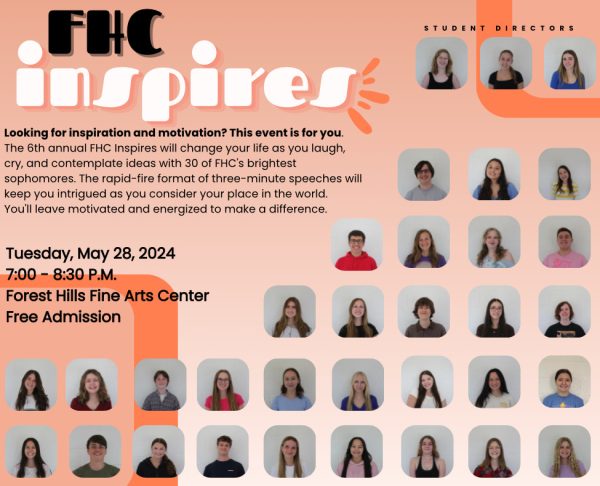

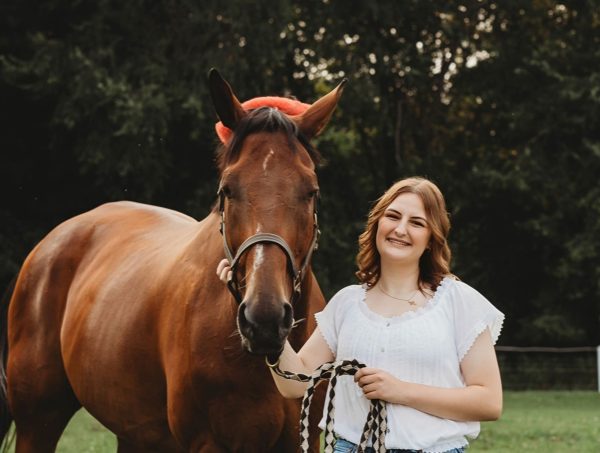
Jennifer James • Dec 9, 2022 at 10:53 am
Great article! It was so fun reminiscing about our start of this paper. Bringing the people, we could, from the first year. Thank you to Andrea, Nate, Lauren and Jenny for sharing with Payton! This truly was a life changing experience for me. So happy it’s still going strong 25 years later! Well done keeping it rolling Mr. George! And in the same room. Haha!
Sarah • Dec 9, 2022 at 8:29 am
👏🏻👏🏻👏🏻👏🏻